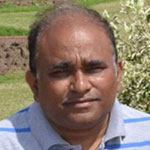
Sanjay Bais
Pacific college of pharmacy, India
Title: Comparative determination of pesticide residue in Anti-diabetic herbal products marketed in India
Biography
Biography: Sanjay Bais
Abstract
Herbal formulations are getting popular throughout the world and commercialized extensively for various medicinal properties. WHO has emphasized the need for quality assurance of herbal products, including testing of pesticides residues. In view of W.H.O guidelines, poly herbal drugs used in herbal formulations were collected from local market, for testing pesticides residue. Therefore, in the present case, we have examined few local samples of certain herbal product. The Medicinal plants materials are liable to contain pesticide residue, which accumulate from agriculture practices such as spraying treatment of soils during cultivation and administration of fumigants during storage. It is therefore recommended that every country producing medicinal plant material should determine the pesticide residue. W.H.O. has established the maximum residue limit (MRL) in medicinal plants. In this research the pesticide residue in different Anti-diabetic herbal formulations were determined by Capillary gas chromatography. From the result of determination of pesticide residue in marketed Anti-diabetic herbal formulation it was observed that the pesticide residues in formulations were present as in AD1 (Dimethoate -0.59 ppm Methyl Parathion-0..48 ppm, Methyl Chlorpyrifos-0.59 ppm), AD2 (Methyl Parathion -0.49 ppm), AD3 (Methyl Parathion -0.39ppm), AD4 (Dicofol- 0.37 ppm), AD5 (Dicofol-0.27ppm).which could produce ill effect on health of patient, using this herbal formulation.
